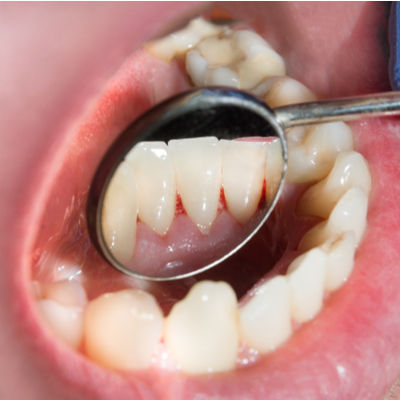
Are your gums receding? Do they bleed when you brush your teeth? Gum disease can be a serious problem and can even lead to you losing your teeth.
Gum disease is a common health problem that affects up to half of the population. It is caused by bacteria that live naturally in your mouth and collect on the teeth as plaque. These bacteria, their toxins and your immune system’s response to them result in inflammation of the gums around your teeth (gingivitis) which can progress and destroy healthy gum tissue over time eventually causing the tooth to become loose and lost.
How is gum treatment performed?
Overall the plan for treatment in most patients has the following objectives:
1. Pocket EliminationHygienists can physically clean all exposed root surfaces under the gum-line under local anaesthetic for your comfort. This will remove most of the toxins and allow some degree of healing. We may also take the decision to prescribe for you two antibiotics to take on the day of treatment and for 7-14 days afterwards. These will help to keep bacterial numbers down during the healing phase.
2. Maintain of bone and prevention of further bone lossWhen plaque is successfully removed from the tooth and root surfaces, this helps to keep bone from being lost. It is even possible to promote some limited bone regeneration as a direct result of the body’s own healing process. However, in areas where there has been extensive bone loss, regeneration will be difficult to predict.
3. Regular maintenance programmesOnce the initial full mouth detoxification has been completed, your susceptibility to gum disease is unlikely to change, so your cleaning needs to be of a very high standard to enable control of the disease in the future.
What should I expect after treatment?
Following cleaning, the gums will be somewhat sore for a day or two. The level of discomfort is usually not so great as to stop you from going on about your daily business. There will be some gum recession over the next few weeks as your inflamed tissues heal. The gums shrink back slightly from their current positions. This is not further loss of gum but merely shrinkage of inflamed tissues to healthy levels.
How are gums maintained and treated in the long term?
Gum disease can be successfully treated and controlled using treatment procedures mentioned above, and usually further intervention is required in areas that prove resistant to the initial treatment. This may involve simply repeating the deep cleaning procedure in selected sites. Should the patient's response to gum treatment not be an optimal one, then more surgical procedures to regenerate bone and gum can be used that will be targeted at specific sites and these will be discussed with you when your initial response to the above therapy is assessed a few months after the initial treatment.
There is no doubt that patients susceptible to gum disease require lifelong hygiene maintenance to ensure disease remains controlled and visits every 6-12 weeks are routine. This is a modest investment to keep teeth and bone that would otherwise be lost. Teeth lost through gum disease are very challenging to replace due to the concurrent loss of bone. Dental implant treatment in such patients is compromised by sparse availability of bone which may need to be augmented with separate procedures. Once carried out, implants and any augmented bone may also be susceptible to the equivalent of gum disease around implants.
It is imperative that regular hygiene maintenance and immaculate levels of oral hygiene are maintained for long term stability of results.



